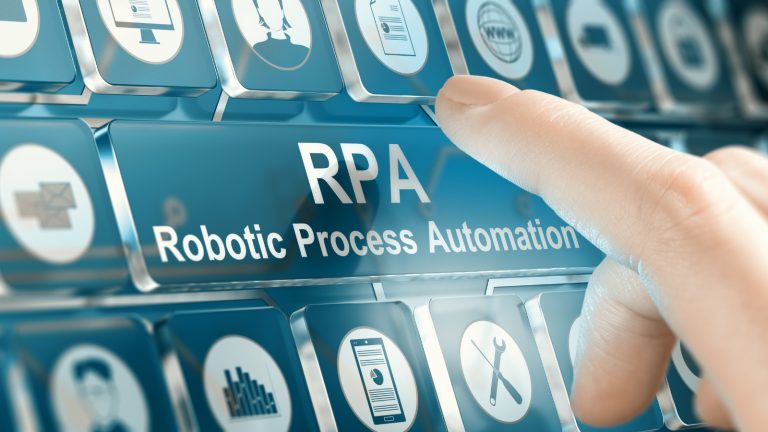The business world is completely energy-drained due to the list of rule-based, repetitive and heavy work they need to attend to every single day. Is there any way to streamline this? How come it is not possible when there is a massively dominant epistemic model called ‘Robotic Process Automation’? Even though this has achieved prominence within a short time, many businesses are still hesitant to walk on this automation path, as they have no proper understanding of how to choose RPA tools.
This article covers some important factors you need to check before making an RPA purchase.
What is Robotic Process Automation (RPA)?

- Robotic Process Automation, or as many know, RPA, is a technology that consists of software robotic programmes or ‘bots’ to streamline the repetitive chores of a factory that usually human workers do on computers during the business process.
- Since this makes an automated flow of tasks such as entering data, moving files from one location to another, transaction processing, sending emails to a client base, etc., businesses can save time and their resources significantly using RPA. These robots have the capacity to fulfil the routine work of human workers 10 times faster and more accurately.
- With many businesses walking on the RPA path, there are some serious concerns about whether RPA will replace humans in the future. According to the experts, it will not replace human intelligence, but streamline it, improving efficiency. In many industries like manufacturing, healthcare, and banking, RPA has come to the spotlight as the best tool to boost efficiency and reduce errors.
How to Choose the Right RPA Tool?- Important Factors to Consider

Ease of Use and Low-Code Capability
If we consider a business like manufacturing, there are two types of workers who have to collaborate with RPA programming. They are technical and non-technical users. This is why the RPA tools are supposed to be intuitive, with features like drag and drop options and low-code alternatives.
That way, even non-technical users can easily manage built-in bots. Plus, when it comes with a user-friendly interface, it reduces the dependence on IT experts as they can do the processing by themselves, increasing efficiency and reducing errors.
Integration Capabilities
One of the main features that needs to be included in the RPA tool is its potential to integrate with existing systems, applications and databases. Since the company can be utilising software programmes such as CRM, ERP, legacy systems, and cloud platforms, it is a must that RPA connects with them seamlessly to acquire data, process it and transfer it into various locations and platforms without disruptions.
Even though there are different software architectures in a company, this capacity will guarantee a reduction of manual interventions, zero data breaches, while paving the way for smooth automation across the whole workflow. As much as your RPA tool is adaptable to various interfaces, third-party applications and APIs, your automation potential has sky limits.
Scalability
A scalable RPA tool is something that must expand with your organisation’s growth. Pushing its boundaries, the RPA tool has to manage more bots and multiplex workflows without delaying its performance. Going beyond pilot projects, you need to check whether it can support enterprise-wide deployment, scaling up alongside the growing process volume and complex architectures.
If you expect long-term ROI, and reduced roadblocks while expanding automation across the entire business ecosystem, then your RPA programme must be developed with high levels of scalability in the first place.
Security and Compliance
Since a business functions with a large volume of sensitive data and needs to meet regulatory standards, checking on RPA’s security features has become a top priority. When you purchase them, it is always better to investigate that the tool has embedded capabilities such as role-based access control, encrypted credentials, audit trails, etc. It must comply with industry regulations such as GDPR or HIPAA.
If a data breach or cyber attack occurs, these security frameworks will protect your company’s data, preventing unauthorised access and all. In one way, such robust security features simplify audits, meet legal and regulatory requirements and protect operational safety.
Bot Management and Orchestration
Effective RPA tools must offer centralised control when it comes to scheduling, monitoring, and managing bots. Proper orchestration comes as a supportive pillar for the business administrators to allocate tasks, balance workloads, track bot performance, and handle exceptions efficiently. This not only simplifies the large-scale deployment framework but also opens doors for optimal resource utilisation.
Plus, it supports preventing downtime with its comprehensive bot management features. With such robustness in RPA programmes, the companies are able to take maximum control over all automated processes, maintaining their operational consistency and quick error identification as benefits.
Advanced Analytics and Reporting
No RPA tools will be beneficial for a business in today’s world if they do not come with the capabilities of advanced analytics and reporting. This is where the RPA has to offer dashboards and various reporting tools to visually present aspects such as bot efficiency, performance of the processes and ROI indicator. Since it has in-built analytics, it will give you useful insight into errors, operational trends and a diverse range of bottlenecks.
With the analytics and reporting features, the companies can easily spot patterns, monitor key metrics and identify the gaps hidden in their automation processes without delay. These important characteristics aid in continuous optimisation of the business automation architecture.
Cognitive Capabilities
One prime focus of RPA tools is to manage both unstructured and semi-structured data; some advanced tools might couple with AI features like natural language processing, machine learning, and image recognition. The difference between a standard bot and a cognitive bot is that cognitive RPA can make decisions, interpret complex information, and process emails, invoices, etc.
Not limited to basic automation capabilities, this feature will grow into handling more complex tasks, keeping the manual intervention away, and boosting process efficiency in processes with heightened process judgement and interpretations.
Cost and Licensing Model
If we give a closer look at the total cost of an RPA tool, we notice that it covers fees for licensing, infrastructure, maintenance, and after-service support. When purchasing an RPA tool, it is the responsibility of the organisations to conduct an end-to-end evaluation first.
This way, you can check whether the pricing aligns with your automation strategy and can cater to your scalability roadmap. It is always better to find a supplier who is transparent when offering cost structures, as this will prevent unexpected expenses and ensure ROI. On the other hand, you must be aware that you can go with flexible licensing options, such as per bot, per user, or enterprise-wide. Whether it is a small-scale business or a large-scale RPA deployment, it will offer you a sustainable and cost-effective option in the end.
Cerexio Automation Power for Your Manufacturing Process

Cerexio Manufacturing Automation Platform is a tool that is developed specifically for modern manufacturers to empower their IT infrastructure during the transition from being small to large-scale enterprises. Collaborating with Industry 4.0 technologies such as AI, Smart Predictive and Prescriptive Analytics, Big Data, and deep visualisation, the Cerexio solution offers RPA tools to build their own execution architecture affordably.
Selecting the Best RPA Tool for the Best Manufacturing Outcome

After reading the whole list of factors to consider when purchasing an RPA tool, you may realise that it is not an easy task. As the right tools bring your operations up to the highest levels, the misaligned RPA programmes will drain your money and other resources heartlessly. It is always the buyer’s duty to align the company requirements with the list of RPA tools’ features before arriving at purchasing decisions.
FAQ about Robotic Process Automation Tool
In the industrial world, three types of RPA tools are dominating the automation workflows, and those are attended automation, unattended automation, and hybrid RPA.
There is a fundamental theory in the Robotic Process Automation programmes. The processes, such as manual, repetitive, and rule-based, are said to be more ideal for RPA implementations than other architectures.
It is a thumb rule that RPA expresses the best possible performance with the activities that come with pre-defined, clear rules and procedures. However, this will not be a problem for intelligent RPA as it comes with the AI and machine learning capabilities, which work more deeply for the knowledge and judgement-based activities.
